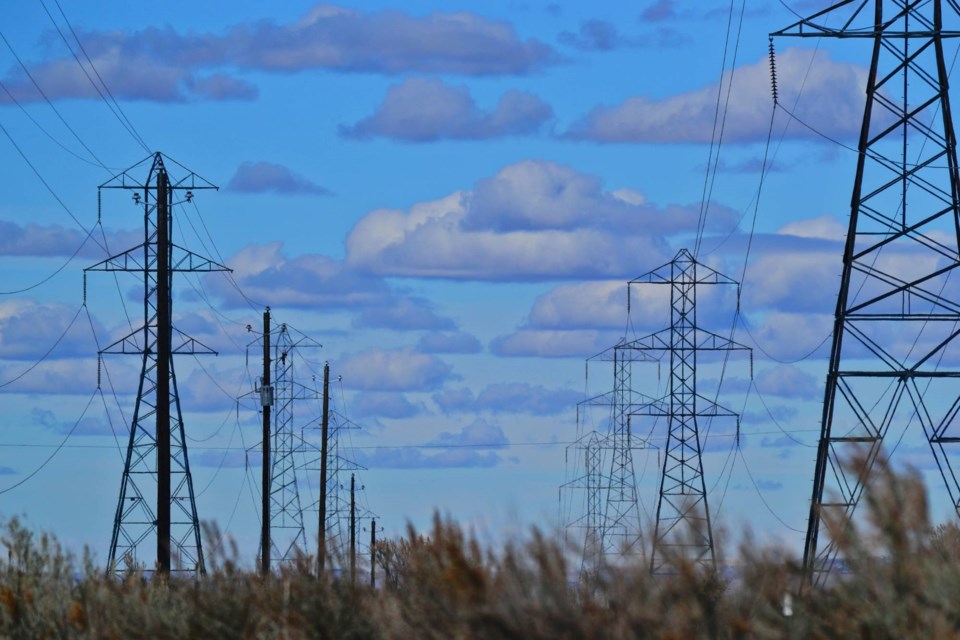Wabun Tribal Council has teamed with Hydro One to bid to develop the proposed Wawa to Porcupine transmission line.
The 50-50 partnership between the council and Ontario’s biggest service provider for electricity transmission and distribution was announced Sept. 3. It’s the second Indigenous group to make it known they want the contract for the new transmission line recommended in a recent report from the Independent Electricity System Operator (IESO).
Choosing a partner for the bid involved community input and consultation, said Wabun Tribal Council executive director Jason Batise.
“It took us a few months to get through the exercise, but we put our minds to it, and the chiefs worked hard to meet with proponents and talk with them,” he said. “We used independent consultants to evaluate the offers that were put forward and came out the other side with a decision to support Hydro One.”
The 260-kilometre transmission line would run from the Wawa Transfer Station south of the township to the Porcupine Transfer Station in the Timmins area.
Batise said the project would be jointly managed by the First Nations and Hydro One.
“There’s an advantage in the construction stage where communities have the opportunities to send their contractors and businesses in to construct the line and operate the line through the life of the infrastructure,” he said. “And employment and training during the construction and operation are important to us as well.”
He said getting involved with an energy project that didn’t have a foreseeable end date, like mining projects, is a welcome step.
“Mines come and go, and things are sort of stop and start that way,” he said. “Transmission lines don’t really have an end date, and we’re happy to put this in the portfolio in our communities as owners for sustainable revenue. That’s really key to our future.”
Wabun Tribal Council represents six Treaty 9 First Nations in Northern Ontario, and five of them — Mattagami, Brunswick House, Matachewan, Flying Post, and Chapleau Ojibwe — are involved in this bid.
Another First Nation coalition is also putting together a bid for the transmission line.
Taykwa Tagamou Nation, Michipicoten First Nation, Chapleau Cree First Nation, and Missanabie Cree First Nation have created the Transmission Infrastructure Partnerships 9 (TIP-9 coalition). They've partnered with Ameren, a Fortune-500 company based out of St. Louis, Missouri.
Batise said the end result for either bid would become a collective effort.
“We’ve assessed our own opportunities, and our five communities have worked together to do that, and the other communities have done the same, and come out with a different solution,” he said. “Whoever comes out the other end will have to include all the nations who have a territorial interest, so we’re being funnelled into collaboration at some point.”
Wabun Tribal Council's focus was to look for partners within the region.
“Hydro One is a proven operator. They’re Ontario-based,” he said. “We know that the Hydro One operations are here in Timmins, and we think that local flavour gives us a bit of an advantage, and we want to support that.”
The Ministry of Energy's Environmental Registry of Ontario (ERO) commenting period for three other suggestions in the IESO report recently closed. There will be a separate commenting period for the Wawa-to-Porcupine line, which the ministry anticipates this fall.
The IESO report says its recommendations would improve reliability for existing and future loads in the Timmins area, and increase power transfer capability from Sudbury to supply future loads in the Sault Ste. Marie focus area and northwest regions.
Batise said that an increase in capacity is needed.
“There are greater energy needs on the grid, some in Timmins and some further south,” he said. “We need to get the electricity to where it needs to be.”
— TimminsToday




